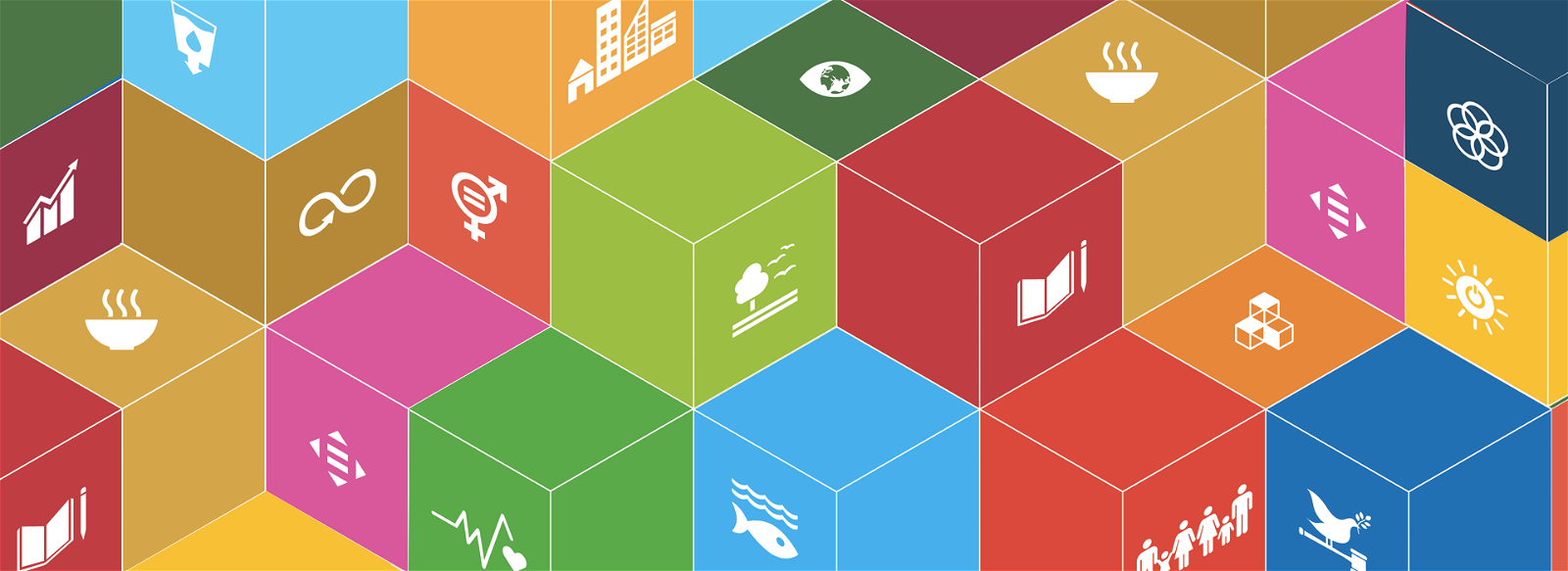The role of exponential technologies in the achievement of the United Nations' Sustainable Development Goals (SDGs) and Agenda 2030 cannot be overstated. With their unprecedented ability to rapidly scale, disrupt industries, and create entirely new ones, exponential technologies are vital tools for addressing the world's most pressing challenges.
In this article, we will explore some of the most promising and impactful exponential technologies, how they can contribute to achieving the SDGs, and the challenges that must be addressed to fully harness their potential.
The SDGs and Agenda 2030
The Sustainable Development Goals are a set of 17 interrelated targets adopted by the United Nations in 2015. They cover a broad range of social, economic, and environmental issues, including poverty, health, education, gender equality, clean energy, and sustainable consumption and production.
Agenda 2030 is the UN's plan to achieve the SDGs by 2030. It emphasizes the need for partnerships and innovation, recognizing that business as usual will not suffice to address the world's complex and interconnected challenges.

Exponential Technologies
Exponential technologies are technologies whose capabilities grow at an accelerating pace, often driven by advances in computing power, artificial intelligence, and data analytics. They include:
1. Artificial Intelligence (AI)
AI is a rapidly evolving technology that enables machines to perform tasks that traditionally required human intelligence, such as image and speech recognition, natural language processing, and decision-making. AI can analyze vast amounts of data and identify patterns and insights that would be impossible for humans to discern. It has the potential to revolutionize virtually every industry, from healthcare to finance to transportation. AI can contribute to the SDGs in a variety of ways, such as:
- Quality Education (Goal 4): One of the main goals of Agenda 2030 is to provide quality education for all. AI can help achieve this by providing personalized learning experiences for students. AI algorithms can analyze individual learning patterns and preferences and tailor educational materials to meet the needs of each student. Additionally, AI-powered chatbots and virtual assistants can provide instant feedback and support to students, improving their engagement and motivation.
- Gender Equality (Goal 5): AI can also contribute to gender equality by addressing gender biases in various fields. For example, AI algorithms can be used to eliminate biases in hiring and recruitment processes by analyzing candidate qualifications and removing identifying information such as gender and race. Additionally, AI-powered tools can be used to monitor and address gender-based violence and harassment.
- Sustainable Agriculture (Goal 2): AI can also play a critical role in sustainable agriculture by enabling more efficient use of resources and improving crop yields. AI algorithms can analyze data on soil quality, weather patterns, and other factors to optimize planting and harvesting schedules, reduce waste, and increase yields. Additionally, AI-powered tools can be used to monitor and manage pests and diseases, reducing the need for harmful pesticides and herbicides.
- Healthcare (Goal 3): Finally, AI can contribute to improving healthcare outcomes and reducing healthcare costs. AI-powered tools can analyze large datasets of patient records and medical research to identify patterns and potential treatments for diseases. Additionally, AI algorithms can be used to develop personalized treatment plans for patients based on their genetic makeup and medical history. This can lead to more effective treatments and improved patient outcomes.
However, AI also raises important ethical, legal, and social issues, such as bias, transparency, and accountability, that must be addressed to ensure its responsible and equitable use.
2. Internet of Things (IoT)
The IoT refers to the network of physical devices, vehicles, and other objects embedded with sensors, software, and connectivity, which enable them to collect and exchange data. The IoT can provide real-time insights into various systems and processes, from energy consumption to traffic flow to supply chain logistics. Some ways IoT can contribute to the SDGs are:
- Sustainable Cities and Communities (Goal 11): One of the main goals of Agenda 2030 is to create sustainable cities and communities. IoT can help achieve this by enabling cities to become smarter and more efficient. By deploying sensors and connected devices throughout a city, local governments can collect real-time data on air quality, traffic patterns, energy usage, and other factors that impact the environment and quality of life. This data can then be used to optimize city services, reduce waste and emissions, and improve public health and safety.
- Responsible Consumption and Production (Goal 12): IoT can also contribute to responsible consumption and production by enabling more efficient use of resources. For example, IoT-enabled smart grids can optimize energy distribution and reduce waste by allowing utilities to monitor and adjust energy consumption in real-time based on demand. Similarly, IoT sensors can be used to monitor and optimize agricultural processes, reducing water usage and increasing yields.
- Climate Action (Goal 13): IoT can play a critical role in addressing climate change by enabling better monitoring and management of greenhouse gas emissions. For example, IoT sensors can be used to monitor emissions from industrial processes and transportation, enabling companies and governments to identify areas for improvement and reduce their carbon footprint. Additionally, IoT-enabled smart homes and buildings can optimize energy usage, reduce waste, and lower emissions.
- Health and Well-being (Goal 3): Finally, IoT can contribute to the health and well-being of individuals and communities by enabling better monitoring and management of health conditions. IoT devices such as wearable fitness trackers and smart medical devices can provide real-time data on physical activity, heart rate, blood pressure, and other health indicators. This data can then be used to personalize healthcare and improve patient outcomes.
However, the IoT also poses significant security and privacy risks, as well as potential impacts on employment and social inequality, that must be addressed to ensure its sustainable and inclusive deployment.
3. Blockchain
Blockchain is a distributed ledger technology that enables secure, transparent, and tamper-proof transactions without the need for intermediaries. It can be used for a wide range of applications, from financial transactions to identity verification to supply chain management. Here are some examples of how blockchain can contribute to Agenda 2030:
- Poverty Reduction (Goal 1): Blockchain can help reduce poverty by providing financial services to unbanked and underbanked populations. Blockchain-based platforms can enable peer-to-peer transactions without the need for intermediaries such as banks, reducing transaction costs and increasing financial inclusion. Additionally, blockchain-based identity systems can provide secure and verifiable identities for people who lack traditional forms of identification, making it easier for them to access financial services.
- Decent Work and Economic Growth (Goal 8): Blockchain can also contribute to decent work and economic growth by enabling secure and transparent supply chain management. Blockchain-based platforms can enable real-time tracking of goods and services, reducing the risk of fraud, and ensuring fair labor practices. Additionally, blockchain-based platforms can provide secure and transparent payment systems for gig economy workers, ensuring timely and fair payment for their services.
- Responsible Consumption and Production (Goal 12): Blockchain can play a critical role in responsible consumption and production by enabling transparent and traceable supply chains. Blockchain-based platforms can enable tracking and verification of the origin, authenticity, and sustainability of products and materials, enabling consumers to make informed choices. Additionally, blockchain-based platforms can enable the creation of circular economies by facilitating the tracking and verification of waste and recycling processes.
- Climate Action (Goal 13): Finally, blockchain can contribute to climate action by enabling the creation of decentralized energy systems. Blockchain-based platforms can enable peer-to-peer energy transactions, enabling the creation of local energy markets and reducing reliance on centralized energy systems. Additionally, blockchain-based platforms can enable the tracking and verification of carbon credits, facilitating the creation of carbon markets and incentivizing sustainable practices.
However, blockchain also faces challenges related to scalability, interoperability, and regulatory frameworks that must be addressed to ensure its widespread adoption and impact.

Challenges and Opportunities
Exponential technologies offer immense opportunities for achieving the SDGs and Agenda 2030. However, their deployment and impact must be carefully managed to ensure that they benefit everyone and do not exacerbate existing inequalities or create new ones. Some of the key challenges and opportunities related to the use of exponential technologies for sustainable development include:
- Access and Equity: One of the primary challenges of leveraging exponential technologies for sustainable development is ensuring equitable access to their benefits. In many cases, these technologies require significant infrastructure, resources, and expertise that may not be available in developing countries or marginalized communities. Therefore, there is a need to bridge the digital divide and ensure that everyone has access to the tools and resources necessary to harness the potential of these technologies.
- Regulation and Governance: Another critical challenge is developing regulatory frameworks and governance mechanisms that can keep pace with the rapid evolution of exponential technologies. These frameworks must be designed to ensure responsible and ethical use of these technologies, prevent abuse or misuse, and protect privacy and human rights. However, it is also essential to strike a balance between regulation and innovation to avoid stifling the development and deployment of these technologies.
- Collaboration and Partnerships: The complexity and interconnectedness of the challenges facing the world today require collaboration and partnerships across multiple sectors and stakeholders. Achieving the SDGs and Agenda 2030 requires a collective effort that involves governments, the private sector, civil society organizations, and individuals. Therefore, it is crucial to build solid partnerships and collaboration mechanisms that can harness the unique strengths and resources of each stakeholder group.
- Sustainability and Resilience: Finally, the use of exponential technologies for sustainable development must be sustainable and resilient in the long run. While these technologies can deliver rapid progress in the short term, their impact may not be sustainable if they do not address the underlying causes of the challenges they seek to address. Additionally, these technologies must be designed to be resilient in the face of systemic shocks and disruptions, such as pandemics, natural disasters, or economic downturns.
Conclusion
Exponential technologies have the potential to transform the world and help achieve the Sustainable Development Goals by 2030. From AI to IoT to blockchain, these technologies offer innovative solutions to some of the world's most pressing challenges, from poverty to climate change to gender equality. However, to realize their potential, we must address the challenges of access and equity, regulation and governance, collaboration and partnerships, and sustainability and resilience. This will require cooperation among governments, the private sector, civil society, and academia to ensure that the benefits of these technologies are shared equitably and that they are used responsibly and sustainably. By doing so, we can harness the power of these technologies to create a better, more equitable, and sustainable future for all.
Illuminem Voices is a democratic space presenting the thoughts and opinions of leading Sustainability & Energy writers, their opinions do not necessarily represent those of illuminem.









